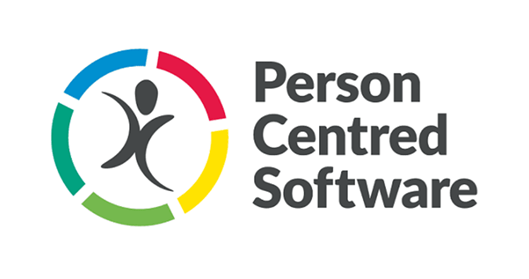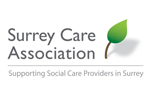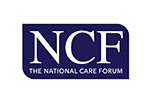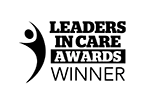The main aspects of health and safety training in care homes and why they are so important to overall wellbeing of residents and staff

It’s difficult to argue that the number one goal of any care setting is the wellbeing and safety of its residents; this means considering and prioritising their mental wellbeing as well as their physical wellbeing and safety. It seems obvious that health and safety training in care homes is an important aspect, perhaps the most important aspect, of any training to provide care – but its importance reaches further than you might think, further than the basic training you might have received when you joined your care home.
At its core, delivering care and achieving positive outcomes starts with health and safety training in care homes, because without proper health and safety training, no other aspect of care can be delivered. It isn’t just a ‘mandatory’ training course to be raced through, it’s the hinge for every aspect of care that your organisation can deliver. So, it’s important to give it the on-going attention it deserves.
Furthermore, not only does proper health and safety training mean that residents are far more likely to experience greater wellbeing and quality of life, but the skills and knowledge that the training will impart on the staff will empower them to provide outstanding care outcomes. With this type of training, you will promote confidence and competence in staff, which then results in better quality care. The very best results all start with the basics, to support staff to provide the best care they can. If not, then the consequences from a resident wellbeing standpoint, as well as a regulatory standpoint, can be dire.
Key legislation to consider for health and safety training in care homes
The recognition of the importance of health and safety is now reflected in the extensive framework of legislation in the UK that oversees health and safety, such as the Health and Safety at Work Act 1974 for England and Wales, as well as the Management of Health and Safety at Work Regulations 1999 for Scotland. Likewise, Northern Ireland introduced the Health and Safety at Work Order in 1978. In all, these legislative frameworks encompass the obligation to health and safety training, ensuring that all care providers adhere to a universal standard.
To reinforce this, guidance and standards from regulators across the UK is also substantial. For example, the CQC in England or the Care Inspectorate in Scotland.
What happens if you do not adhere to health and safety standards?
The repercussions of a failure to adhere to health and safety standards only serve to magnify its importance.
Health and safety training is something that should be regularly observed and maintained in keeping with the evolving standards of care provision, because if not, organizations can be at risk of fines and legal sanctions or even more severe steps like the closure of the service. Not only this, but non-compliance, even if not enough to warrant full closure, can cause irreparable damage to the service’s reputation, leading to an erosion of trust in families who might otherwise have considered the service for their loved one.
Apart from any of the legal or financial measures that might be taken (which some care services, already facing financial strains, might find hard to recover from), the notion of losing trust is arguably just as important: this level of trust is hard earned but easily lost, and if health and safety training is not at the forefront of continued learning and development, the kind of oversights and mistakes that can often occur as a result might lead to serious incidents that do significant harm to the reputation of a service.
And this leads to the biggest risk of all: compromising the safety and wellbeing of residents; failure to adhere to health and safety best practices endangers residents as well as staff.
What are the core principles and outcomes of health and safety training in care homes?
Like any other type of training, effective health and safety training requires a few fundamental elements, such as:
- Aims: What are the primary goals of the training and what skills, knowledge and understanding should be gained?
- Intended learning outcomes: Upon completion of a training course, what are the specific areas that should be covered, and how might they be put in practice. This might be aspects such as best practice, recognising and managing risk or the study of regulatory and legal requirements.
- Practical and theoretical: Training should comprise both theoretical understanding and hands-on, real-world experience, which allows those working in care to demonstrate that they can apply what they have learned in the course.
- Regular updates: Training isn’t a one-time responsibility. Rather, it should be a continuous process of improvement, especially given the dynamic nature and changing standards of health and social care. Training should be regularly undertaken to maintain high standards and understanding of the latest best practices and regulations.
- Assessments and feedback: To ensure a closed loop of improvement, there should be periodic evaluations of performance to find out whether standards are being met, and if not, how might the training be used to ensure they are.
Health and safety training is at the core of all care provision
Health and safety training, like all training, should not be seen as little more than a box-ticking exercise if you want to remain at the forefront of the care industry. But more than that, health and safety training doesn’t just mean you’re ahead of the curve, it’s the bare minimum of what it means to provide good levels of care to the most vulnerable members of society.
Continued health and safety training should always be a priority, but that doesn’t mean it has to be daunting or time-consuming. By using our Mandatory and Compliance Training tool, you can harness the combined knowledge and skills of over 100 courses on every aspect of care provision to remain not just in line with best practices, but to go one step further and provide outstanding care.
To find out more about our Mandatory and Compliance tool, just click here.





.jpg)

.webp?width=80&height=80&name=HTD%20Awards%202023%20Badge%20(4).webp)














